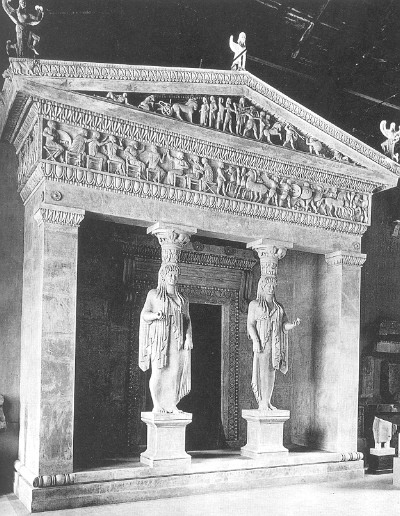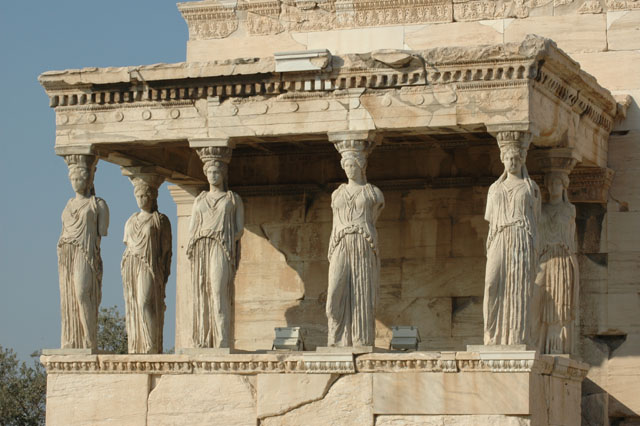by Amanda Bauer
A caryatid is a sculpture of a woman that is used as a column, usually to support a porch roof. Caryatids were never used in Doric architecture and only rarely in Ionic. The first examples of caryatids from the 6th century resemble contemporary archaic korai dressed in Ionian chitons and himatians, such as the caryatids of the Siphnian Treasury at Delphi.

Siphnian Treasury at Delphi
Classical caryatids, like those of the archaic period, are similar to contemporary sculptures—this time, Classical sculptures. The caryatids on the south porch of the Erecthion not only have contrapposto stances exemplary of the 5th century but also realistic draperies that mimic the ionic columns they replaced. The sculptures also look solid and columnar. The figures therefore both naturalistically resemble both the flexibility of the human form and the rigidity of a column.

South porch of the Erecthion, Athenian Acropolis
Works Cited:
Kleiner, Fred S. and Mamiya, Chrisitin J. Gardener's Art Through the Ages. 12th ed. Belmont, CA: Thomson Learning Inc., 2005.
Posted at Dec 13/2007 11:28PM:
Harry Anastopulos: Caryatids! These are one of my favorite features of ancient Greece. In addition to being absolutely beautiful aesthetically, the sight of a building being held up by an actual human figure adds greatly to one's impression of the magnitude of a physical structure.
